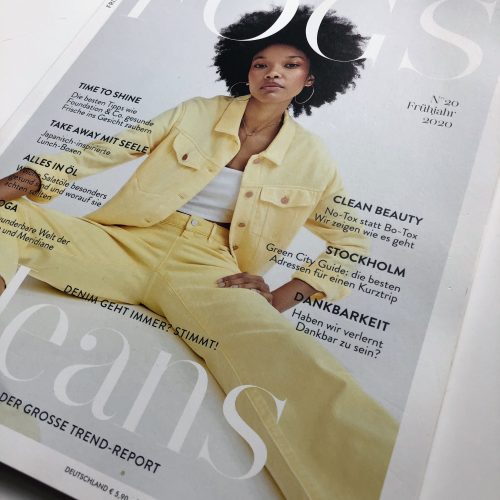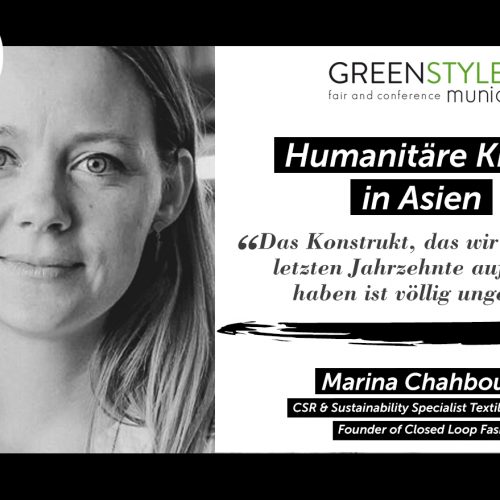Consciousness instead of desirability
We spoke with Anja Woertge about the task of sustainable fashion journalism and a possible change in values.
How much journalism is actually in fashion journalism? Do we have to rely on the personal responsibility of the readers? Can fashion journalism work at all in the context of sustainability? Anja Woertge, who studied fashion & design at the AMD Akademie Mode & Design in Berlin, illuminates these topics.
She knows both sides, having worked as fashion editor for Stylight and Burda Style before becoming fashion director for the sustainable magazine FOGS. Besides her freelance work as fashion editor & stylist for magazines like ELLE, Grazia & Co. she writes about everything on mountains on her blog Mountanista.
We are to some extent a service provider to the industry. But also service providers to humanity.
Journalists are often referred to as service providers to the industry. Quite right. Their duty to inform is not being fulfilled. Against the background of the climate crisis, sales-promoting and image-driven product journalism, as it is widely practiced today online and offline, is no longer relevant.
10 must-haves of the season should also decrease in conventional magazines.
As a sustainable fashion journalist, you go from being an advertiser to an informer. Instead of arousing desires, sustainable journalism focuses on awareness. The aim is to rethink and show that instead of “more” there is also “more beautiful, better, more durable”. Central themes are the return to values. Less (mass) consumption. More sustainability.
Sustainable fashion journalism has three tasks
![]()
To show the reader what sustainability means and why it is fun.
![]()
To provide a platform for small sustainable labels to grow.
![]()
To show the industry why it is worth investing in sustainability.
Sustainability is also becoming increasingly important in conventional fashion magazines. To expand the target group. However, the more in-depth information is still provided by special interest magazines. It would make sense to interlink both media. Ideally, this reorientation of the topic will lead to a change in values in fashion journalism.






